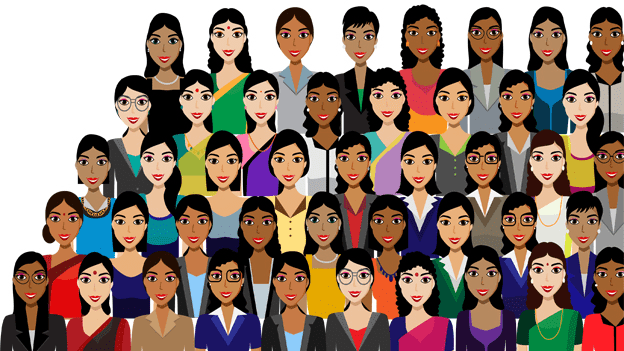Geriatric millennials & hybrid workplace

With the onset of COVID-19, our communal way of life at work turned turtle, and before we knew it, remote working promptly took over as isolation rules were ordained across the world. Prior to the pandemic, 52% of employees globally worked from home at least once a week and 68% did the same once per month. After the declaration of the pandemic, 88% of organisations enabled employees to set up workstations at home.
Now, vaccines are on the market, and companies are pulling out all the stops to get their employees inoculated. With a semblance of normalcy beginning to manifest, how and where people will work is being reconceived. According to the 2021 Microsoft Work Trend Index, more than 40% of the global workforce is contemplating parting ways with their employer this year. So far this year, the prognostication has proven true. The current phase of excessive turnover or The Great Resignation as it is now labelled, has revealed that people are more likely to throw caution to the wind and quit their jobs altogether than return to office full-time.
Bearing this in mind, the most considerate yet astute solution will be the implementation of a hybrid work place that will appeal to and help preserve diverse talent. A hybrid work model allows employees to intermingle working from different locations – home, office or on-the-go. Employees expect the best of both worlds, and employers have to make arrangements accordingly. A report published by Microsoft stated that over 70% of employees want flexible remote / hybrid work options to be available even post the pandemic. Additionally, Accenture chronicles that 83% of 9,326 workers surveyed seek a hybrid work life where they can function remotely at least 25% of the time.
Geriatric Millennial – the term that has taken the internet by storm
Geriatric Millennials may share a part of their title with their younger complements, but they are a breed apart. They were born between the years of 1980 and 1985 – their age as of today ranges anywhere from 36 to 41 years. They make up a generation that is subsumed in another generation or, in other words, a micro generation. Some famous personalities who belong to this classification are Serena Williams, Andrew Garfield and Michael Phelps. In the corporate world, illustrious CEOs such as Facebook’s Mark Zuckerberg, Airbnb’s Brian Chesky and Reddit’s Alexis Ohanian constitute this category. But age is not the sole factor. Micro-generations are not merely defined by the period in which they were born, but more so by their use of and engagement with technology.
Younger Millennials have grown up absorbed in technology and cannot imagine a world where digital tools are the not the predominant mode of communication. In contrast, Geriatric Millennials have a primeval side to them. They were an offline age group, spent their childhood without a cell-phone and used the internet when it was still sluggish. They also happened to be the first ones to be exposed to personal computers and social platforms like Facebook. To put it in a nutshell, Geriatric Millennials are eloquent in the teething ways of technology, but they have also become accustomed to new-fangled systems of digital media such as Instagram, TikTok, Snapchat, Houseparty, etc. which remain a mystery to older cohorts like Baby Boomers.
Geriatric Millennials are poised to transform the work culture
It has been established that this unique age band bestrides the two disparate groups of “digital adapters” (Boomers and Gen X) and “digital natives” (Young Millennials and Gen Z). The difference between these clusters does not lie in only their fashion, entertainment, and lifestyle preferences, but also in the important facet of careers. Geriatric Millennials spent their developmental years at both the ends of this spectrum, so they are neither here nor there, but this is exactly what bodes well for them in a hybrid workplace.
In light of the emerging practice of a hybrid work mode, Geriatric Millennials are the best equipped to efficaciously manage multigenerational teams. This responsibility and expectation are not too heavy a burden for this subset of a generation to carry because they are quick at adapting. Having seen the best of both worlds, they find it easy to be compatible with Gen Zers and also have the fortitude to deal with Baby Boomers as more and more advancements take place.
Organisations whose workforce is characterised by various generations will benefit from calling on their Geriatric Millennials to smoothen out and synthesise the experiences of their motley of employees. This distinct group still sets great store by traditional body language – direct and full-fledged eye contact, the lean-in, etc. which seem to hold no importance to the fresher batch of Millennials. Millennials have become so dependent on technology for communication that they no longer know how to respond to body language cues. They are unperceptive of postures, gestures and facial expressions, leaving a lot to be lost in translation. Additionally, they tend to speak in a way that mimics informal text conversations, which flies in the face of the professional communication skills expected in the workplace. Another common slip-up at their end during the work-from-home scenario has been a lack of concern about their backgrounds and appearance for video calls. This comes across as shoddy and improper, particularly to senior employees who are used to a certain decorum and take it for granted that everyone should be ready for some discomfort for the sake of professionalism. So, Geriatric Millennials can do their bit by coaching this generation on a more formal approach to work, office etiquettes and the decipherment of body signals.
On the contrary, older employees also need to be moulded. They are often resistant to new technology, but Geriatric Millennials, skilled as they are at finding their feet in new circumstances, can aid them by creating an open dialogue about how far becoming tech-savvy can take them and also facilitating their exposure to the latest trends and practices in the domain. This is especially of the essence today when technology has become requisite for the continuity of our working and personal lives. Assistance in achieving fluency in digital formats of communication will really bear fruit as well. For instance, Geriatric Millennials can help older team members learn digital language norms – such as identifying sarcasm in an email or a message or the proper usage of emoticons in addition to understanding why asking a question on Yammer or Slack might be better than unexpectedly calling someone or sending a reply-all mail.
Practices that can make a difference
Generally, Baby Boomers and Gen Xers see Millennials and Gen Zers as pompous, and they, in turn, treat their senior counterparts as antiquated in their ways. Geriatric Millennials are on the ball with the newest norms, and through their understanding of the needs of both these factions, they can endeavour to create an enabling environment where they all flourish through cross-generational mentoring and reverse mentoring. By doing so, they can shift the focus from differences to the value that each generation really brings to the table.
Geriatric Millennials could also dig a little deeper than mentorship programs. One way to do this is to assign Millennials and the older corps to projects that demand collaboration and equal collaboration to be fruitful. There will inevitably be hiccups along the way, but witnessing people’s expertise in action will produce appreciation and an understanding of how these skills can be used to maximum advantage in the future. Additionally, harnessing a collective skill set will innately lead to cooperation because at the of the day, both the sides involved share the purpose of wanting the project to hit the mark. The magic bullet here is to be abreast of the motivations of each group and individual, so that they can be put in the best setting for success.
Geriatric Millennials could also take the lead in launching training programs aimed at team building and closing the generation gap. These could run the gamut from game-show style competitions and board games to volunteer projects and adventure excursions. The motive is to help the parties establish a solid camaraderie that will extend beyond the training period. All the above tactics will not only give rise to a more inclusive internal culture, but also ultimately lead to a much more satisfied clientele in any organisation.
Though technology has come to our rescue over the past one year or so, it has also exacerbated the occurrence of digital burnout, particularly in the case of Gen X and Baby Boomers. Millennials have famously (or infamously) received the moniker of the “Burnout Generation” anyway. Asana’s Anatomy of Work Index 2021 highlights a clear-cut link between burnout rates and the degree of reliance of workers on their devices. Despite this, Zoom, Slack and other media platforms will remain a permanent part of our post-pandemic future, but what Geriatric Millennials are capable of doing is removing barriers to connecting and celebrating collective successes, so that people do not feel isolated and there is an abundance of opportunities to build trust through informal interactions. Geriatric Millennials, with their unique skillset and background, are also in the position to ensure that good old phone calls, visits to clients and in-office meetings persist once the dust settles, thus catering to the preponderance of employees who want flexibility without losing out on the pre-Covid office work culture.
The need of the hour for every organisation is to find is a set of leaders who can seamlessly and comfortably traverse both traditional and analogue methods of communication, close the divide and steer everyone towards a better universe of work. The ongoing period of extreme and pricey turnover can only be overcome by listening to and empathising with employees, and that is precisely why organisations that can attract, engage, develop, and retain geriatric millennials will thrive in the hybrid workplace.
This article was first published in September 2021.










